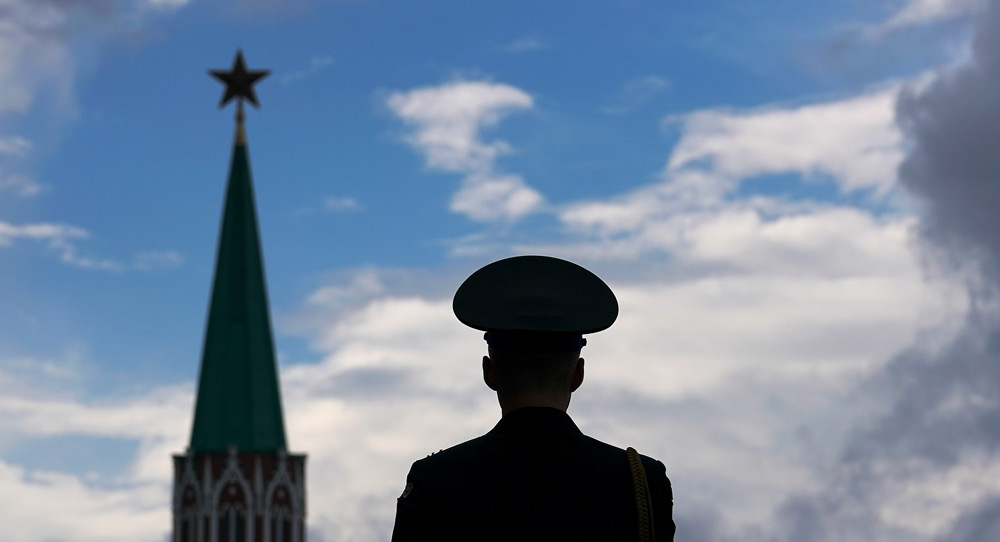Where did it all go wrong? “Bliss was it in that dawn to be alive,” in William Wordsworth’s words, thirty years ago in 1989, as Central and Eastern Europe threw off their Communist regimes and the Cold War came to an end.
Now with Russia and the West locked in a new phase of confrontation over Ukraine, it is natural to ask how things could have been done differently. William Hill’s new book, No Place for Russia: European Security Institutions Since 1989, is a big and serious effort to trace the efforts to build a new European security architecture after the end of the Cold War. He maps the evolution of three institutions—the Conference (then Organization) for Security and Cooperation in Europe (CSCE/OSCE), the European Union, and NATO—and traces the falling out between Russia and the West, some of which began even before Vladimir Putin took office.
Hill’s book is not for the faint-hearted, coming in at almost 400 pages of text, with a further 100 of footnotes. It is more suited for graduate students in international relations than the general reader. But policymakers will learn an enormous amount from it, especially its first and last chapters. Hill is not just an author but a practitioner, being a career Russia specialist who served in a variety of posts in the U.S. diplomatic service and the OSCE.
The U.S. perspective is vital, as a central thread of the book is how the United States stayed as a security actor in Europe beyond anyone’s expectations as the Soviet Union ended. A major reason for that is the Yugoslav wars and the refusal by either France, Germany, or the UK to take the lead in ending them. The United States eventually seized the reins, via NATO, thereby also transforming the organization into a new kind of collective security alliance.
Hill’s background enables him to see the perspectives of all sides. There are multiple confirmations that Russians do indeed come from Mars, seeing a world out there which is guided by hard power and realpolitik; and most Europeans are from Venus, believing in transformative soft power. The Americans are the hardest to read, as they veer between the two.
At times, misunderstandings occurred because the Russians misread a genuine values-based approach of the Western powers in the former Communist states. Hill writes, “Russians often appear not to understand why the manner in which they conduct relations with their neighbors should be of concern to distant European or North American countries, especially when these countries often have a history of mistreating their own neighbors.”
At other times, Russian complaints about double standards appear quite justified. Hill reminds us how in 2006, then U.S vice president Dick Cheney made a speech in Vilnius blasting Russia for its lack of democracy, shortly before traveling to Kazakhstan. There he had a bilateral meeting with President Nursultan Nazarbayev, bestowing warm words on a leader more authoritarian than Putin and whose relationship with the United States was based on energy cooperation.
The most vexed issue is that of NATO’s enlargement to the east. Hill does not buy the argument that then U.S. secretary of state James Baker made a pledge in February 1990 that NATO would not expand, saying his words have been taken out of context and that this is “essentially a fairly recent Russian narrative constructed as much to justify as to explain current anti-United States and anti-NATO policies.” Yet Hill also shows some sympathy for the alienation Russia felt as both its former Warsaw Pact allies and the Baltic States joined NATO and the alliance pledged in 2008 that Georgia and Ukraine would join too. By any standards, this was a hard pill to swallow in Moscow.
Was there an alternative? As a former OSCE ambassador himself, Hill traces how the OSCE was unable to step up and become a fully-fledged international security organization. Everyone had different expectations of it, and it lacked a strong institutional identity of its own.
Moreover, it is evident here how hard it was to forge a different path when Russia, under Yeltsin, was so dysfunctional and inconsistent. A weak Russia advocating friendship to the West may have looked like an attractive proposition to Western policymakers in the 1990s, but it only postponed the issue of what Russia’s future role would be—given its history, geography, and military might, the new Russia was never going to be merely a larger version of Poland. Putin was not a voice in the wilderness, but a spokesman for a large part of the establishment.
I missed reading more about Yeltsin himself in the book, because his own contradictory personality was surely part of the problem. More generally, I had hoped for more anecdotes and character portraits. Diplomatic negotiations often do succeed or fail thanks to the personalities involved. This behind-the-scenes storytelling made Hill’s previous book, on negotiations over the Transdniestria conflict and his own role in them, a real page-turner. With the EU now facing multiple questions about its future and NATO experiencing hostility from the most surprising of quarters—from the president of the United States—the book will need a sequel very soon. The biggest question remains about Russia itself and to what extent it is fated to continue on the track that Putin set it on in 2014 with the annexation of Crimea. What would it take to make Russia more comfortable with its neighbors and the other states of Europe? Is there a future European security order that Russia can be part of? We don’t have any of the answers here, but we have a very fine diagnosis of the problem.






